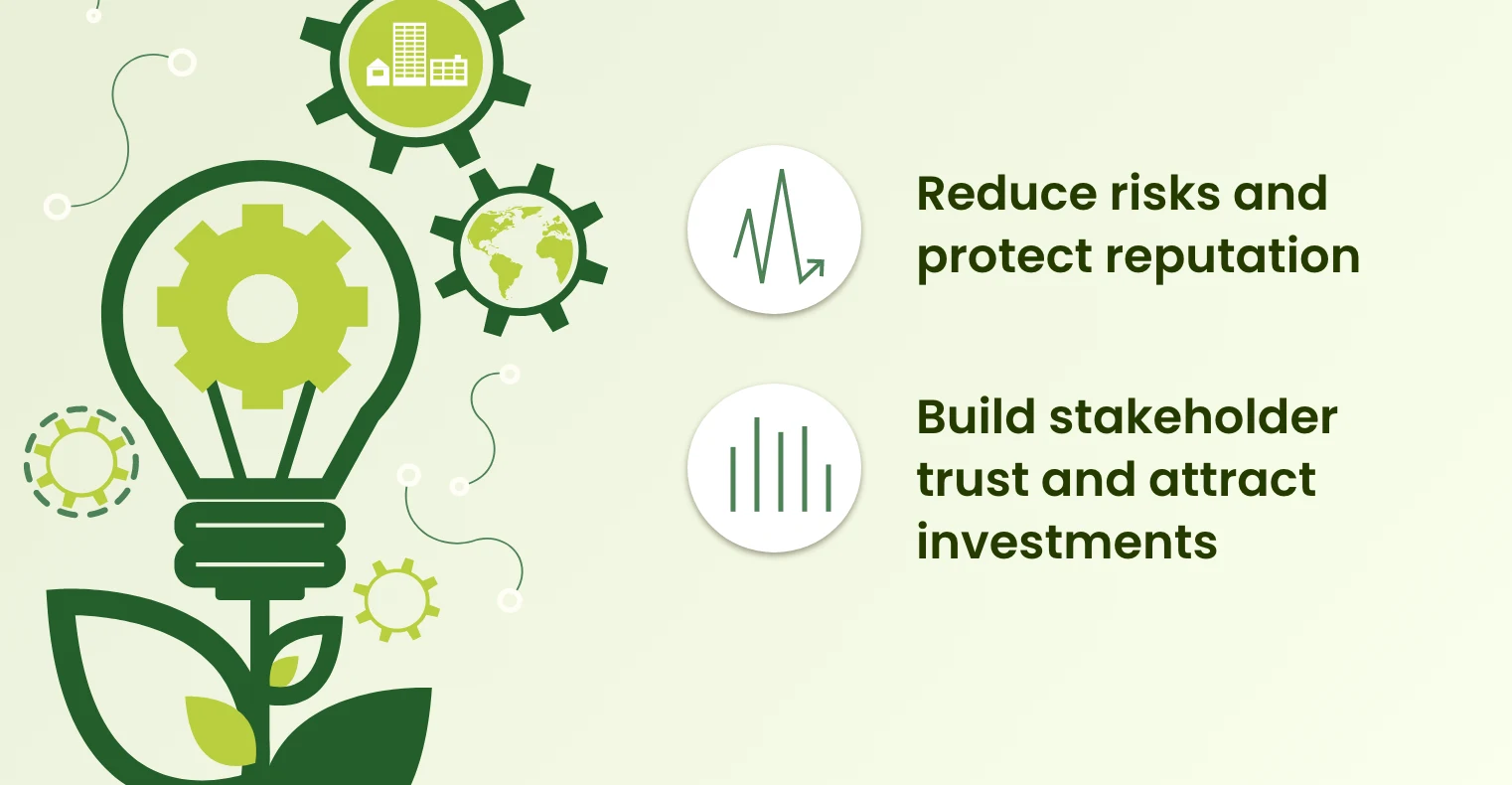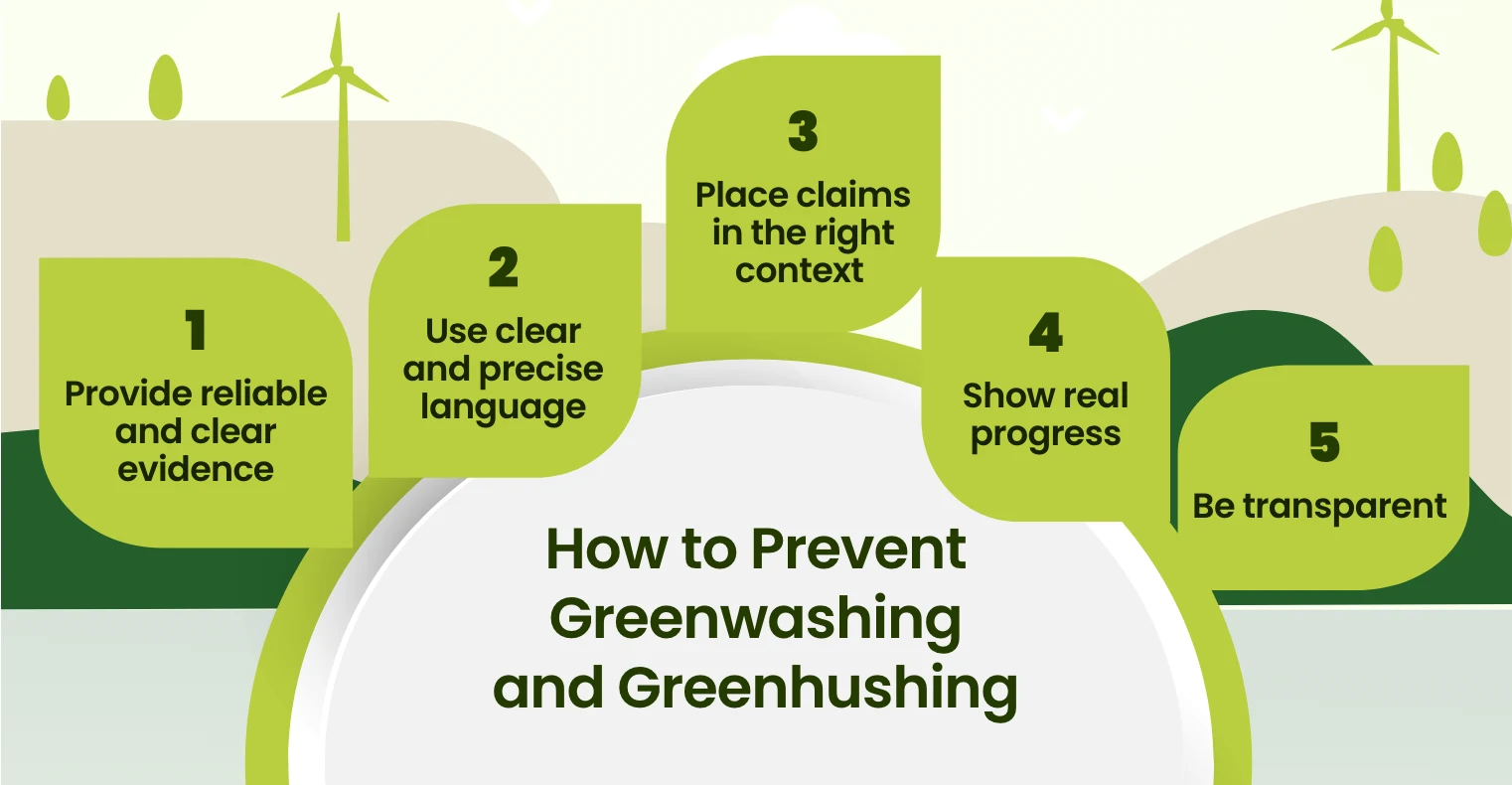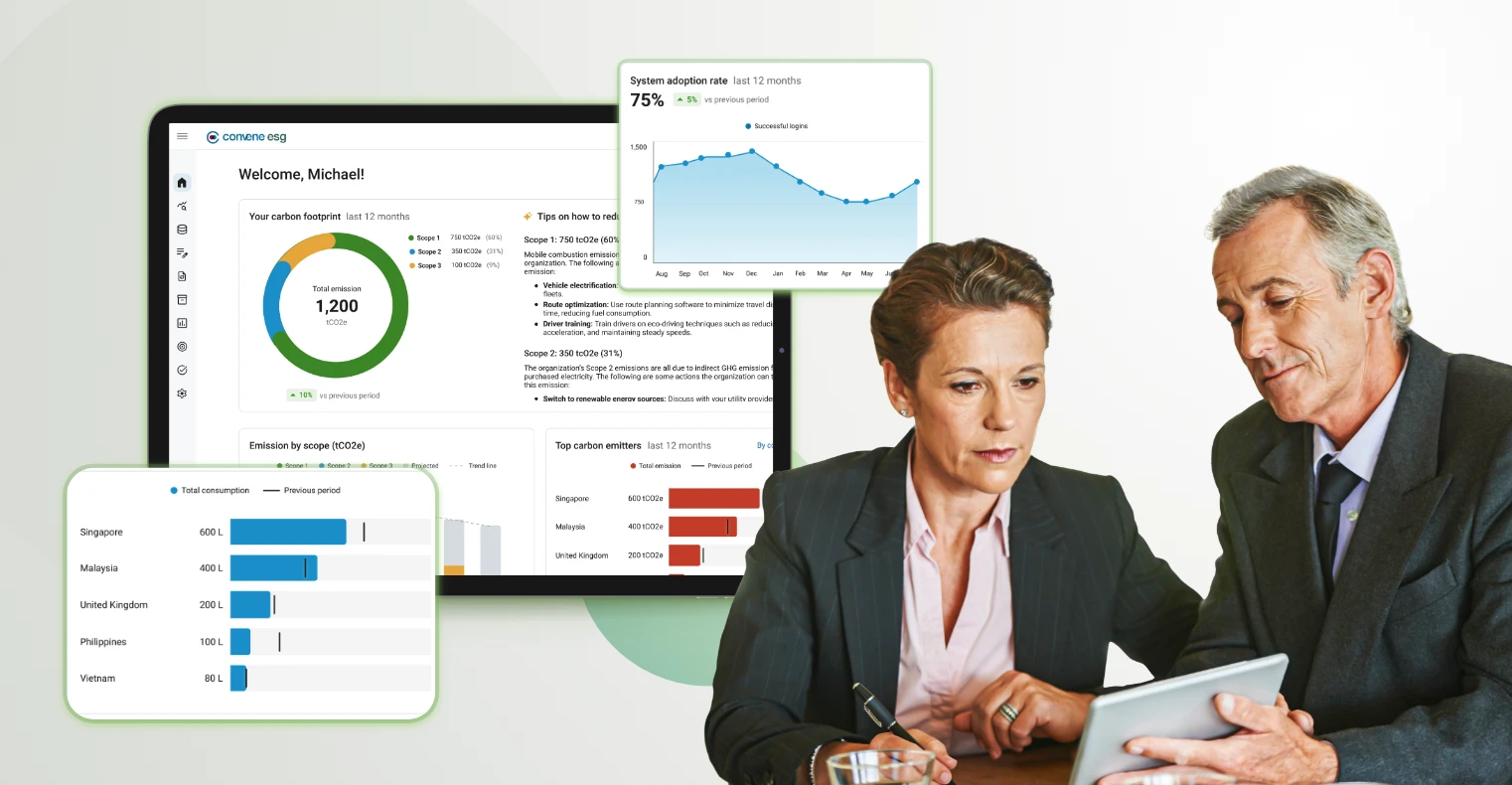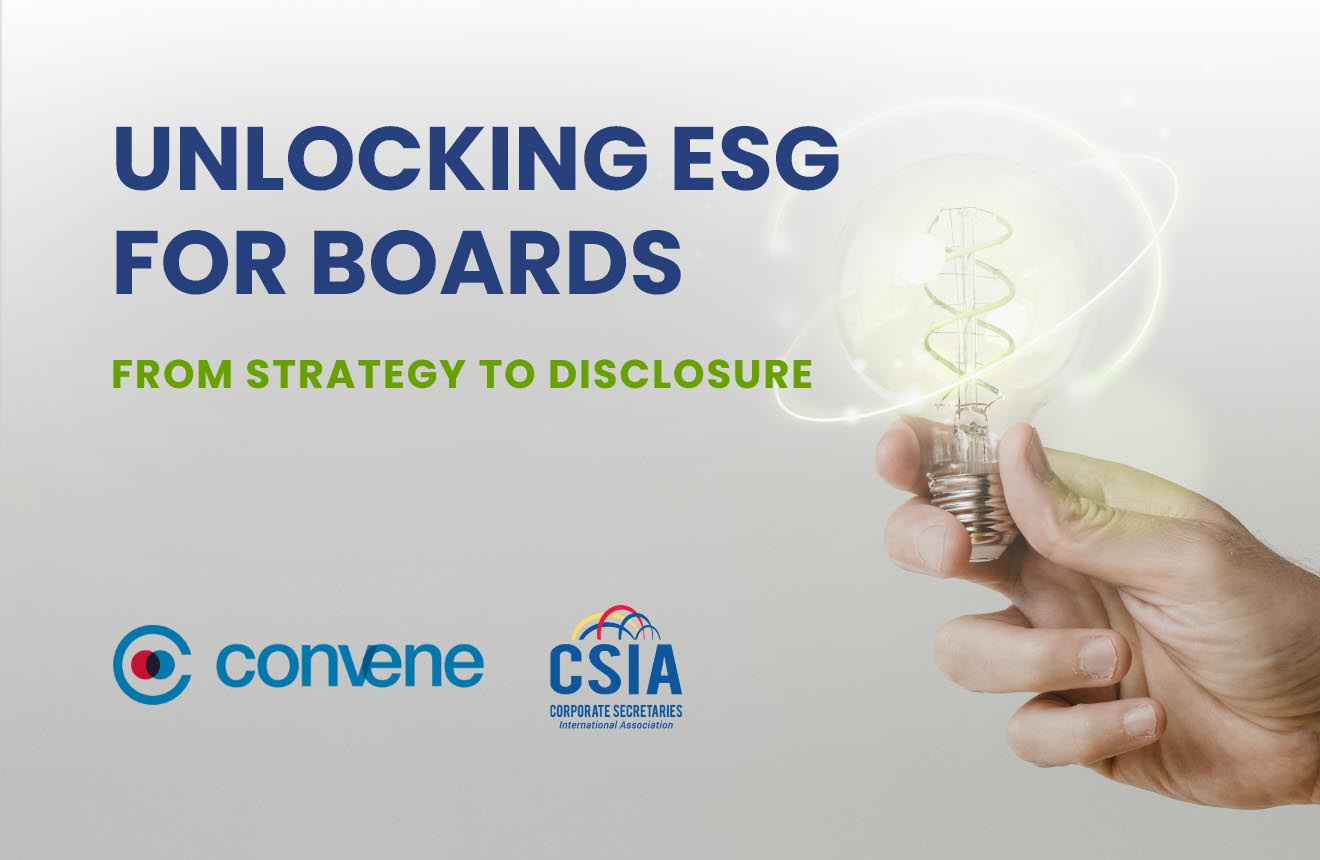The rise of conscious consumerism, regulatory demands, and investor expectations has pushed companies to consider more responsible and fair practices. But it’s not enough for companies to simply change their operations and activities. They must show their stakeholders what they’re doing and why it matters.
Communicating a company’s sustainability journey requires data, facts, and, beyond that, an authentic narrative that sparks engagement and trust. From reducing carbon footprints to ensuring ethical governance, businesses must communicate their sustainability story in a way that resonates emotionally and transparently with people.
What is sustainability communications?
Sustainability communications is the practice of communicating a company’s sustainability and environmental, social, and governance (ESG) efforts in a way that goes beyond compliance. Think of it as a two-way conversation, where businesses don’t just speak to stakeholders. They listen and engage. They need to focus on this engagement, making sure people feel emotionally connected to their mission.
Whether it is ensuring fair labour practices or improving ethical governance, sustainability communication makes a company’s goals and values visible to people. By stepping up sustainability messaging with storytelling, data, and collaboration, companies create a narrative that resonates with different stakeholders. This communication can be external, engaging audiences such as consumers, investors, and the community, and internal, reaching employees, partners, and suppliers. Sustainability communication, when done right, influences a meaningful dialogue and potentially inspires collective action in the broader global context.
Why should companies communicate about sustainability?

In today’s global developments, sustainability should be deeply embedded in a company’s operations and effectively communicated as a key part of its strategy. The pressure from consumers, investors, and regulators is rising, asking companies to opt for green and responsible practices. This is why we are seeing advancements and pouring investments into the social, economic, and, especially, environmental business areas. Such is the case over the last five years, wherein 87% of CEOs invest in climate action to stay ahead in the market.
The visibility and impact of sustainable initiatives can return benefits, like:
- Reduce risks and protect reputation: Transparent sustainability messaging helps businesses stay ahead in meeting regulations and standards aligned with the global agenda of the United Nations Sustainable Development Goals (UN SDGs). This minimises risks and business disruptions tied to compliance and protects its reputation from potential sustainability and ESG issues.
- Build stakeholder trust and attract investments: Effectively communicating sustainability goals and performance strengthens trust and relationship with stakeholders and attracts investors who prioritise responsible and green practices. It aligns with business practices and guarantees that the company can adapt to global challenges and expectations.
The Role of ESG Reporting in Sustainability Communications
One of the most powerful ways for companies to communicate their sustainability efforts is through ESG reporting. As sustainability is growing in demand, global regulations on ESG disclosures are also being introduced and reinforced, such as the developing requirements in the Asia-Pacific region and the European Union’s Corporate Sustainability Reporting Directive (CSRD). Levelling up sustainability and ESG communications and strategies with transparent reporting goes beyond compliance, as it serves a clear and structured way to share impact, progress, and accountability to stakeholders.
Initiatives like the UN Global Compact and frameworks and guidelines, such as the Global Reporting Initiative (GRI), help create a common ground to track ESG metrics to measure and report on sustainability. These efforts, from emissions to employee well-being and board diversity, when integrated into reporting, help companies communicate their goals with credibility and consistency. By using global frameworks, businesses can make their ESG and sustainability communication strategies more data-driven and relatable across global markets. This translates abstract values into measurable commitments, proving a company’s sustainability message is backed by real action.
Four Pillars of Sustainability Communications
To successfully engage with stakeholders, the best sustainability communications rest on four key pillars: authenticity, transparency, engagement, and consistency. These pillars not only guide effective messaging but also reflect the global standards, such as the seven principles of the Task Force on Climate-Related Financial Disclosures (TCFD) and quality reporting principles of the GRI. They emphasise a clear, reliable, accountable, impactful, and well-intentioned messaging of a company’s sustainability efforts.
- Authenticity: Companies must walk the talk, aligning their messaging with their true brand and company identity and values. Genuine communication about a company’s initiatives and sustainability practices prevents greenwashing or overstatements. This creates trust and stronger connections, as stakeholders value honest efforts that show real commitment to sustainability.
- Transparency: This is about being open with stakeholders and sharing clear and accessible information about goals, progress, and challenges. Honest communication builds credibility, as it holds companies accountable and keeps audiences informed and involved in the process.
- Engagement: Engagement isn’t just broadcasting messages, but creating a dialogue. Involving stakeholders in discussions and initiatives makes them feel valued, turning them into active supporters of the company’s sustainability efforts. This creates more meaningful relationships and strengthens strategies.
- Consistency: This guarantees sustainability messages remain steady and reliable over time. By aligning communications across channels and ensuring coherence, companies build a consistent brand image that shows they are seriously committed to long-term sustainability. Consistency strengthens trust and reinforces the company’s dedication.

Building Your Sustainability Communication Strategy
Sustainability is an integral part that should be seamlessly incorporated into every messaging, including its brand identity. Sustainability must be embedded in every communication channel, from marketing materials to social media posts, and press releases. All these are to consistently remind stakeholders of the company’s mission and values in every interaction with the company.
How to Prevent Greenwashing and Greenhushing
Greenwashing occurs when businesses exaggerate or mislead about their environmental impact to appear more eco-friendly than they truly are in reality. This can backfire and damage the business’s reputation when consumers realise the claims are not supported by reliable evidence. This was the case for Unilever in 2023, when authorities launched a formal investigation into the company’s potentially misleading and unverified environmental messaging about product recyclability and natural content.
On the other hand, greenhushing is underreporting or hiding sustainability efforts out of fear of legal issues. This also lowers public trust and affects the visibility of legitimate environmental developments. Volkswagen’s 2015 scandal is an infamous example of this. The company cheated the emissions testing to lower the emission results for reporting and market the efficiency of the clean and green vehicles. This fallout impacted the company’s finances and reputation even in the later years.
To have sustainable communications without falling into the traps of greenwashing or greenhushing, companies need to focus on clarity and honesty. The Public Relations and Communications Association (PRCA) Asia-Pacific Sustainability Working Group developed guidelines for credible environmental messaging. It stresses the importance of making accurate, science-based claims, avoiding exaggerated or misleading environmental statements and misinterpretation of sustainability efforts. This can be prevented with clear terminology and verified and reliable data. Here are its key points:

- Provide reliable and clear evidence: Any claims about a product’s environmental benefits should be backed by credible and researched sources, and should be easy for consumers to verify. Companies must be ready to prove their claims and avoid exaggerating these environmental benefits.
- Use clear and precise language: Avoid general terminology like “eco-friendly” or “green” unless it is well-supported by facts. It makes a big difference to use specific terms that are backed by solid evidence, like “100% recyclable”, and explain how these claims are calculated.
- Place claims in the right context: Be sure to explain environmental claims about the entire company or a product’s full life cycle. Do not mislead consumers by suggesting small changes are part of a larger environmental shift.
- Show real progress: Any claim about environmental improvement should be based on actual changes. For example, if a product has minimal increase in recycled materials, it should be communicated clearly and not overhyped.
- Be transparent: Share both the positive and negative sides of a product’s environmental impact. Providing extra information and links to more details can help build trust and prevent customers from being misled.
How to Be Effective in Sustainability Messaging

Companies need to move beyond buzzwords that simply float around and fail to contribute to substantial conversations. To capture attention, brands must tie sustainability to tangible benefits for it to deeply resonate with customers and the community. Apart from the principles already covered, effective messaging is about delivering clear, meaningful, and actionable content.
- Go beyond green: Sustainability should not be confined to environmental themes alone. It also covers social and governance issues, such as fair labour practices, ethical leadership, and diversity. A strong sustainability message reflects this broader corporate responsibility for the long-term value not just for the planet, but for people and systems it interacts with.
- Align messaging with product benefits: Sustainability messages increase consumer interest. But it has to align with and enhance the product benefits, not replace them. Consumers are less engaged with the science of sustainability unless it directly affects them, especially their health and the planet they live on. Giving them a reason to care will connect them better to the product.
- Use clear and accessible language: Research found that 72% of sustainability managers hold advanced degrees, which may explain why many communications are overly technical or lack accessibility. Evident examples are the overused jargon and vague phrases about the commitment and future outlook of a company without mentioning anything more specific than that. This also leads to the next one.
- Focus on the why: Not targeting the clear goals and whys behind a company’s sustainability efforts weakens the message and fails to resonate with consumers. Explaining why sustainability matters and not just what the company is doing builds an emotional connection that strengthens brand loyalty.
- Tell a relatable story: Messaging shouldn’t focus on company promises. It should tell a story of the journey stakeholders can connect with. Stories help humanise sustainability efforts and performance numbers, strengthening the emotional resonance established with the audience.
- Utilise different platforms: A study on sustainability communication in Asia shows the expanding role of social media in promoting environmental and conservation behaviours. It highlighted the impact of visual communication and community engagement, including influencer partnerships combined with clear messaging. Online platforms, including LinkedIn and TikTok, continue to influence different audiences with wide-ranging demographics for awareness and informative discussions. In addition to these platforms, long-form, data-driven outlets, such as sustainability and ESG reporting, are also gaining traction. Unlike bite-sized information, they provide a space to visualise and comprehensively explain progress and developments.
- Maintain consistency across channels: Along with the different communication platforms, it is also important to stay consistent with the company’s sustainability messaging. This reinforces the commitment and helps build a coherent brand image overall.
Examples of Effective Sustainability Communications
Several companies have successfully implemented sustainability communications strategies that resonate with their audiences:
- Patagonia: The outdoor apparel brand focuses on transparency and authentic action. The company avoids the overuse of “sustainability” and instead acknowledges its own environmental impact while using storytelling and community campaigns to engage its stakeholders.
- IKEA: The company’s messaging strategy includes clear product labelling, such as its materials, including responsibly sourced wood that meets the standard of the Forest Stewardship Council (FSC). They also provide labelling for water and energy consumption and efficiency information, and engage and educate consumers in eco-conscious living through marketing materials like store catalogs and displays.
- Coca-Cola: Coca-Cola integrates sustainability into its brand messaging by highlighting its environmentally sustainable product innovations, such as the use of plant-based materials and reduced carbon footprint for its packaging. They also connect with Gen Z and millennials through social platforms and influencer campaigns to share the company’s values around diversity, environmental responsibility, and community impact.
Align Your Sustainability Communications with Convene ESG

Businesses need an integrated approach that ties together sustainability and an ESG communications strategy. The company’s commitment, efforts, progress, and goals must be communicated to stakeholders. The goal is clear, impactful messaging that talks about tangible benefits and inspires behavioural change.
This is where ESG reporting software is valuable. As an emerging tool that helps companies measure and report sustainability efforts, ESG software can provide data-driven insights for transparent and reliable sustainability communication. This takes away concerns of vague claims, greenwashing, and unverifiable data that destroy a company’s sustainability narrative.
Convene ESG is here to effectively communicate a company’s sustainability efforts and goals. It streamlines reporting processes by centralising data collection, offering pre-built templates that align with global standards, and providing real-time tracking for accurate insights and progress. With Convene ESG, you can manage and report on your ESG performance with ease. You have the assurance that your messaging is transparent, accurate, and truly aligned with your sustainability goals.
Start elevating your sustainability journey. Book a demo with us!
Pat is a Content Writer, focusing on informative and purposeful content for Convene ESG. She has written for sustainable living and art exhibitions, and took part in research and communication projects linked to the UN's Sustainable Development Goals, further diving her into sustainability and ESG values. Outside of marketing and content, she explores new subjects in film, drawing, and occasional overthinking.















